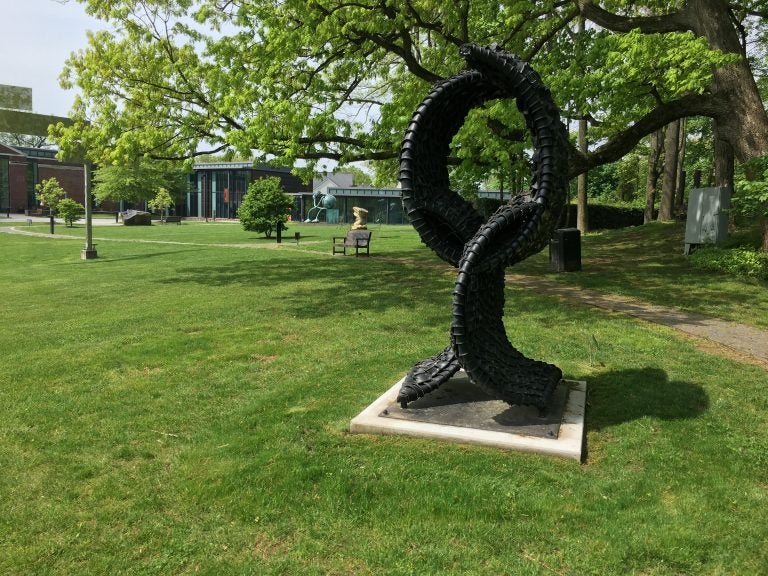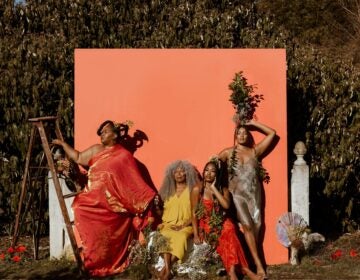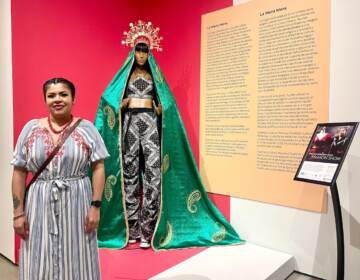Delaware Art Museum works to diversify its collection
Two-thirds of the Delaware Art Museum’s purchases in 2018 were created by women or artists of color. It’s part of an museum initiative to better reflect the community.

The sculpture “One Way” by Chakaia Booker is the first work by an African American artist to be installed at the Delaware Art Museum’s outdoor Copeland Sculpture Garden. (Mark Eichmann/WHYY)
The Delaware Art Museum is on a mission to improve the way its collection connects with the community. To do that, the museum is adding new works created by women and artists of color to its holdings.
Those works include a series of retro-reflective screen prints by Hank Thomas Willis that the museum commissioned last year to mark the 50th anniversary of the National Guard’s nine-month occupation of Wilmington streets to quell the 1968 riots.
“Thomas made an incredibly powerful set of artworks that allowed visitors to be immersed in that history, and we had such a strong response from museum visitors,” said Margaret Winslow, curator of contemporary art. “They were interested in the project, they were drawn to the works of art.
“And for that reason, among others, the museum made the decision to acquire this significant artwork for the permanent collection.”
The Thomas work, “Black Survival Guide, or How to Live Through a Police Riot,” was featured in an exhibition last year as part of the museum’s programming around the 1968 Wilmington riots. The collection combines historic photos that were published in the Wilmington News Journal with a pamphlet written in 1968 by the Northeast Conservation Association. The guide offered advice on interacting with police and responding to an emergency.
Of 24 works the museum purchased in 2018, 18 were created by women or artists of color.
“We increasingly hear from our public that people want to see art that reflects themselves, that reflects their interests, their experiences,” said chief curator Heather Campbell Coyle. “So having work by women, by artists of color, helps more people to feel reflected in the art.”
Coyle, who recently gave state Rep. Sherry Dorsey Walker a tour of the museum, said Walker was happy to see works by fellow Howard University alumni displayed at the museum.
“It’s those sort of connections that people can have with art as you diversify your collection,” Coyle said. “It’s really important.”
The museum purchased its first piece of African American art in 1937. That painting, “After a Shower” by Wilmington native Edward Loper, is now part of an exhibit featuring multiple Loper pieces alongside works produced by his son, Edward Loper Jr. The museum has also worked to complement the Loper works with other African American artists who were working at the same time.
In 2018, the museum added the first sculpture by an African American artist to its outdoor Copeland Sculpture Garden. “One Way” by Chakaia Booker is a twisting, circular combination of rubber tire pieces. Her sculpture suggests diversity, mobility and hope, with the interconnected circles meant to indicate movement.
“It allows us to show our visitors the range, the diversity, that we see in contemporary art today, and by artists who are reflective of the museum’s community in which we live and serve,” Winslow said.
WHYY is your source for fact-based, in-depth journalism and information. As a nonprofit organization, we rely on financial support from readers like you. Please give today.





